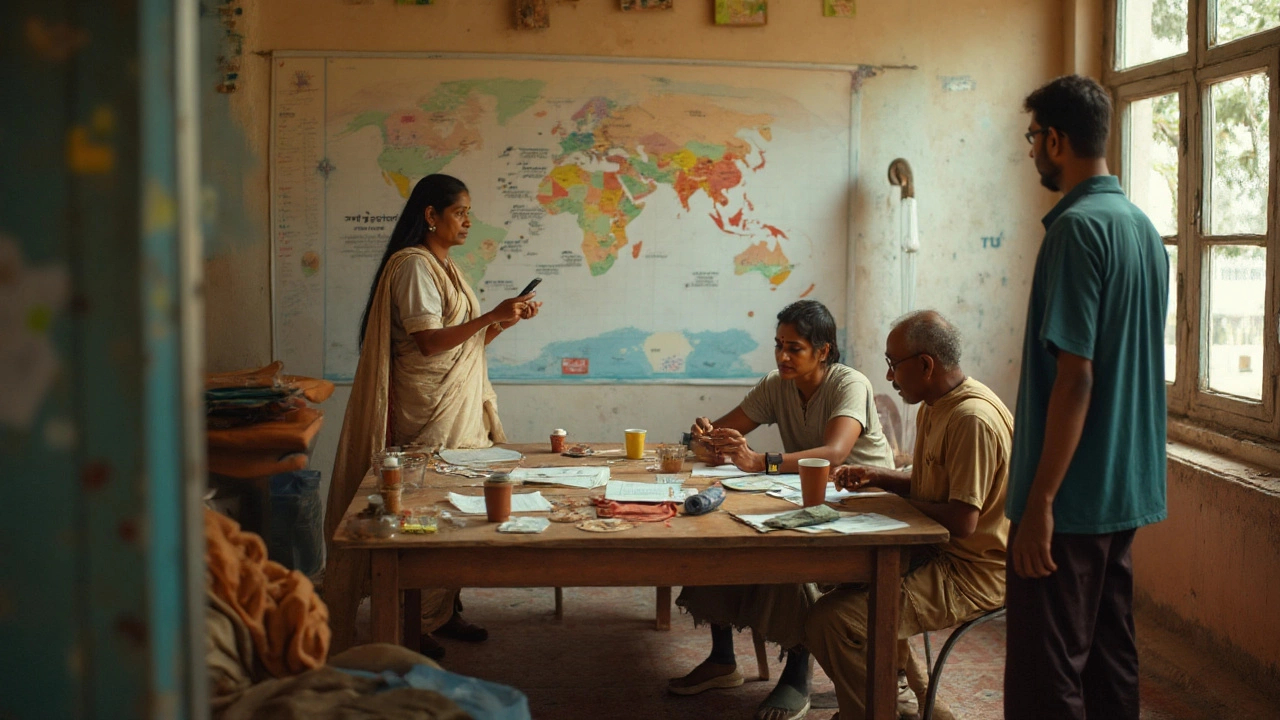What September 2025 Brought to the Charity World
If you swung by our site in September, you saw three fresh pieces aimed at making your charitable actions smarter. First up was a step‑by‑step guide on landing a volunteer gig that actually fits you. Then came a deep‑dive into what community outreach teams do day‑to‑day, plus the skills they need. Finally, we listed the best environmental charities of 2025 and showed you how to vet them before you give. Let’s break down the key takeaways so you can put them to work right now.
How to Choose the Right Volunteer Job – A Practical Guide
Finding a volunteer role isn’t about signing up for the biggest name; it’s about matching your skills, schedule, and passion. Start by listing three things you enjoy doing – maybe tutoring, event planning, or gardening. Next, note the time you can realistically commit – a few hours a week, weekends, or a one‑off project. With those two lists, search platforms like our own Trust directory for roles that tick both boxes.
Don’t forget to read the role description carefully. Look for clear expectations about tasks, training, and reporting. If a post is vague, reach out and ask for specifics; a good organization will gladly clarify. Also, check whether they provide a mentor or supervisor – that makes a huge difference for new volunteers.
Finally, run a quick “fit test.” Ask yourself: Will this role let me learn something new? Will I see the impact of my work? If the answers are yes, you’re probably on the right track. Pair this method with our checklist (downloadable on the post page) and you’ll avoid the common pitfall of over‑committing or ending up in a role that feels like a chore.
Roles and Responsibilities of Community Outreach – Key Duties, Skills, and Examples
Community outreach professionals wear many hats. Their core duties include planning events, building relationships with local leaders, and measuring program impact. A typical day might start with a quick check‑in with volunteers, then shift to drafting a partnership proposal for a nearby school, and end with updating a spreadsheet that tracks attendance and feedback.
Key skills for these roles are communication, organization, and a knack for storytelling. You need to be able to pitch a program in 30 seconds, keep multiple calendars in sync, and turn raw data into a simple success story for donors. Real‑world examples from the post include a “Health Fair” organized in a rural village, where the outreach coordinator secured three medical partners and attracted over 200 attendees.
Metrics matter. Most outreach teams track the number of participants, partner satisfaction scores, and the amount of resources mobilized. The post gives a handy checklist: set clear goals, collect baseline data, run the program, then evaluate against the targets. Doing this not only proves the program’s value but also helps secure future funding.
Whether you’re looking to step into an outreach role or want to improve an existing program, the guide offers templates for event planning, stakeholder mapping, and FAQ sections that you can copy directly into your work.
And if you’re wondering how all this ties back to volunteering – many outreach positions start as volunteer roles that evolve into paid or leadership positions. So the volunteer guide you read earlier can be your first step toward a rewarding outreach career.
What Charity Protects the Environment? Best Environmental Charities and How to Choose (2025)
When it comes to green giving, not all charities deliver equal impact. Our 2025 roundup screened hundreds of NGOs on transparency, measurable results, and on‑the‑ground presence. The top three made the cut: GreenIndia Trust, which restored 15,000 hectares of mangroves; Clean Air India, focused on reducing urban smog through policy advocacy; and Wildlife Guardians, which rescued over 2,000 injured animals in the Himalayan region.
How to vet a charity? First, look for audited financial statements – they should show at least 70% of funds going directly to programs. Second, check for clear impact metrics – like “trees planted” or “tons of CO₂ reduced.” Third, see if the organization engages donors with regular updates; transparency builds trust.
Once you’ve narrowed down a few options, use our simple three‑step plan: (1) visit the charity’s website and download the latest annual report; (2) read third‑party reviews on platforms like GuideStar India; (3) reach out with a quick email asking about how they measure success. A responsive charity will gladly share details.
Donating a modest amount to any of these vetted groups can move the needle on climate action, wildlife protection, or clean water initiatives across India. Pair your contribution with volunteering – many of these NGOs need hands‑on help, from tree‑planting drives to data entry for research projects.
That’s the September snapshot: a practical volunteer guide, a clear roadmap for community outreach, and a vetted list of the best green charities. Use these resources to pick a role, sharpen your outreach skills, and give to causes that truly protect our planet.
How to Choose the Right Volunteer Job - A Practical Guide
Learn a step‑by‑step method for picking a volunteer job that fits your skills, schedule, and passions. Get tips, compare volunteer types, and avoid common pitfalls.
Read MoreRoles and Responsibilities of Community Outreach: Key Duties, Skills, and Examples
Clear, practical guide to community outreach roles. Learn duties, skills, planning steps, metrics, examples, checklists, and FAQs to run effective programs.
Read MoreWhat Charity Protects the Environment? Best Environmental Charities and How to Choose (2025)
Want your donation to actually protect the planet? See the best environmental charities in 2025, how to vet them, and a simple plan to give with real impact.
Read More

